Simrad Halo Radar Review
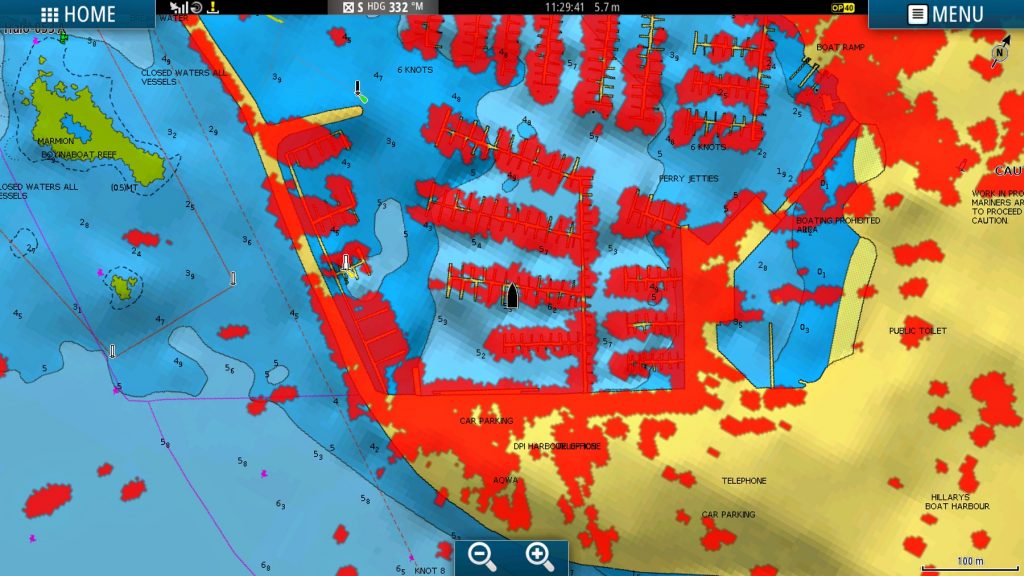 When Simrad released its new Halo radar system in the middle of last year it created many firsts for the technology. It also made technology that was previously only available for military use accessible to recreational boaters for the first time. And it will change the way we view and use radar, the same way CHIRP sonar, the sophisticated fish-finding technology, has changed the way we view the bottom of the ocean.
When Simrad released its new Halo radar system in the middle of last year it created many firsts for the technology. It also made technology that was previously only available for military use accessible to recreational boaters for the first time. And it will change the way we view and use radar, the same way CHIRP sonar, the sophisticated fish-finding technology, has changed the way we view the bottom of the ocean.
The Simrad Halo Solid State Pulse Compression Radar combines the best characteristics of traditional pulse (which is used for long-range detection) and broadband (which provides a much clearer short-range picture) radar systems. It is a project that has taken 10 years and $15m to complete and will redefine the level of technology that is within reach of the average boat owner.
The Simrad Halo Radar, which has a starting price of under $3500, is compact enough to be used on sports fishing boats. It also is easier to use, quieter, quicker, safer and cheaper than any radar system we have seen before.
This week BoatAdvice had the opportunity to see the Simrad Halo Radar in operation on a Caribbean 40, owned by Hi Tech Marine owner, Tony Spiteri.
WHAT YOU GET
The Simrad Halo is available in three different sizes 3, 4 and 6, which signifies the width, in feet, of the open array antennae and also dictates its maximum range. All you need to be able to have the unit fitted to your boat is a hardtop or targa bar capable of supporting the unit and enough room for the antenna to spin freely.
The radar can be used in conjunction with the Simrad NSS or NSO in the evo 2 range to give you dual page access or multiple screen displays. The test boat was fitted with the largest Halo system that has a range of 72 Nautical miles (133kms). It was connected to two 16-inch NSO multifunction display units. This configuration enabled a navigational overlay to be placed over the radar on one screen providing a much easier to read and understand picture.
Some of the other major features of the system include: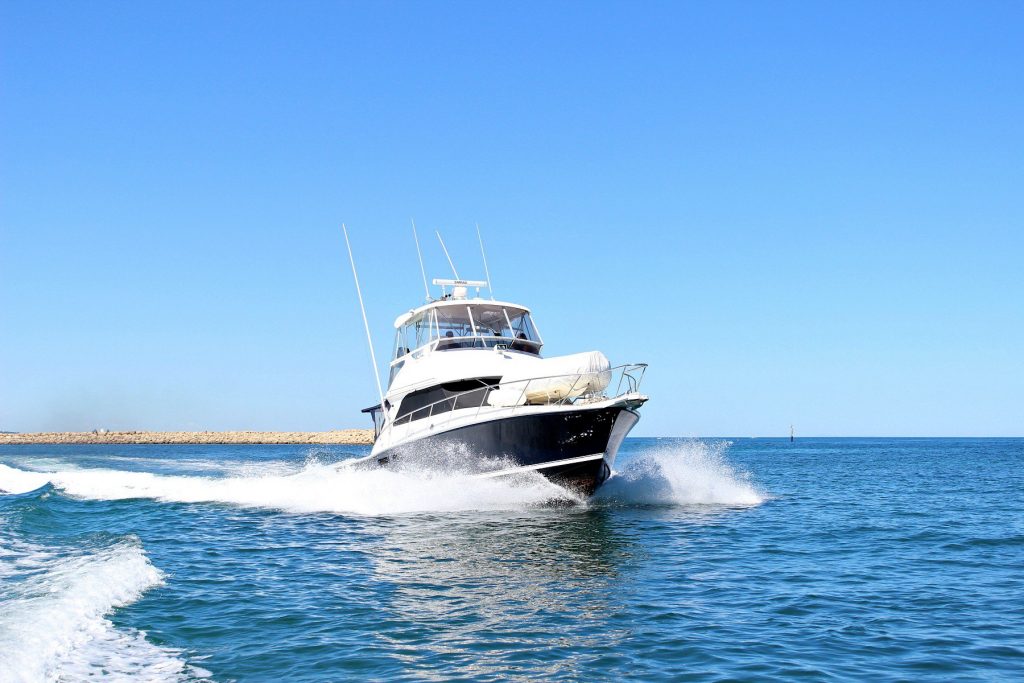
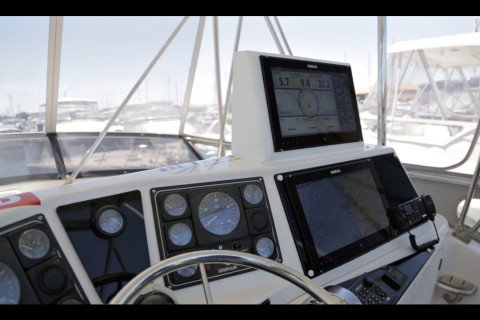 Beam Sharpening: This function enables you to clearly separate individual targets whether that is within a flock of birds or a string of channel markers.Beam Sharpening with Target Separation Control also ensures you get the same resolution on a small screen as you would on a bigger one that did not have the feature.
Beam Sharpening: This function enables you to clearly separate individual targets whether that is within a flock of birds or a string of channel markers.Beam Sharpening with Target Separation Control also ensures you get the same resolution on a small screen as you would on a bigger one that did not have the feature.
Dual Range Operation: Enables the radar to function as two separate systems, with their own display and controls, monitoring two distance ranges simultaneously. This means you can have one half of the screen set up to identify any obstacles close to the boat while also monitoring the weather at your intended destination or on route.
MARPA Target Tracking: To use this feature you also need a heading sensor and GPS. If you have both those features it enables you track up to 10 different targets. Once you have identified a target you want to monitor the radar will show you its closest point of approach (CPA), when it will arrive at that point(TCPA or time to closest point of approach) and whether it will get dangerously close to your vessel. If the deems the latter is inevietable an alarm will sound. By using MARPA in conjunction with the split screen function you double the amount of targets you can monitor to 20.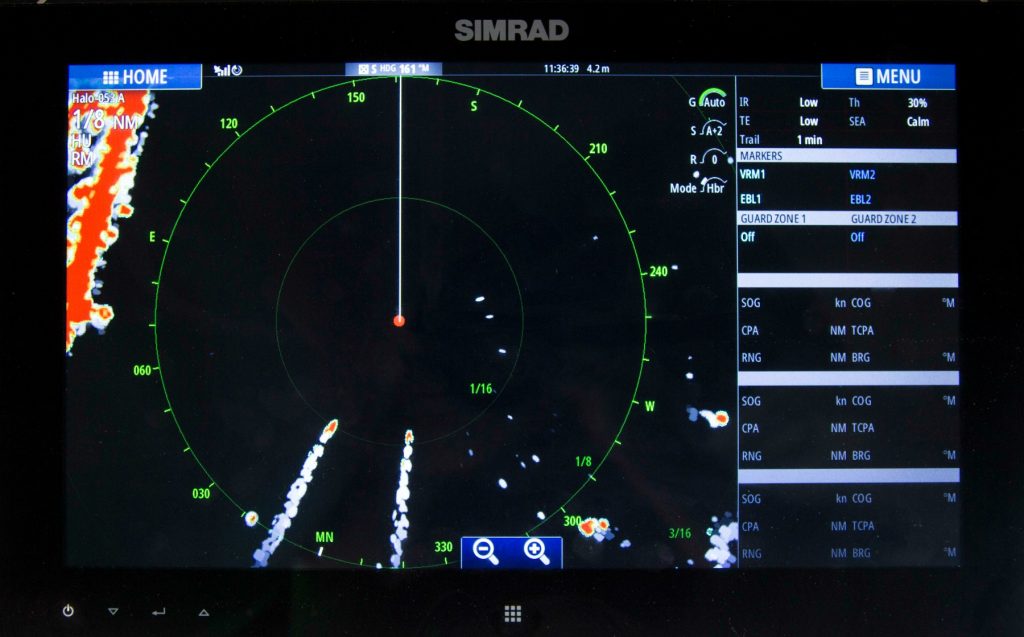
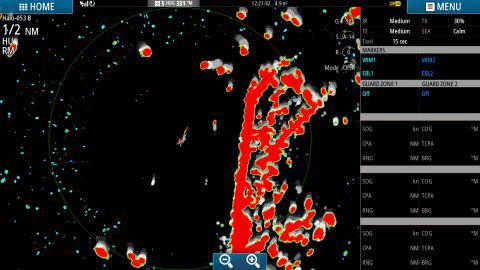
User Modes: There are five pre-set user modes — Custom, Harbour, Offshore, Weather, and Bird. These modes ensure the targets you are most interested in can be vividly seen. In Harbour mode that would mean any traffic inside the harbour while Bird mode will enable you to target, and track, birds feeding at sea.
High Speed Mode: The Halo Pulse Compression Radar provides rapid position updates, with high-speed operation of up to 48 rpm.
Instant On: The system takes less than 25 seconds, more than 2.0 minutes quicker than a conventional radar, to be fully operational after switching it on.
Low Electromagnetic Emissions: Unlike traditional pulse radar, Halo Radar’s low-power pulsed transmissions meet upcoming Low Emission standards. This makes Halo Radar safe to run in anchorages and marinas.
Low Power Consumption: Halo Radar uses 40W average with no wind, and no more than 150W at maximum wind velocity.
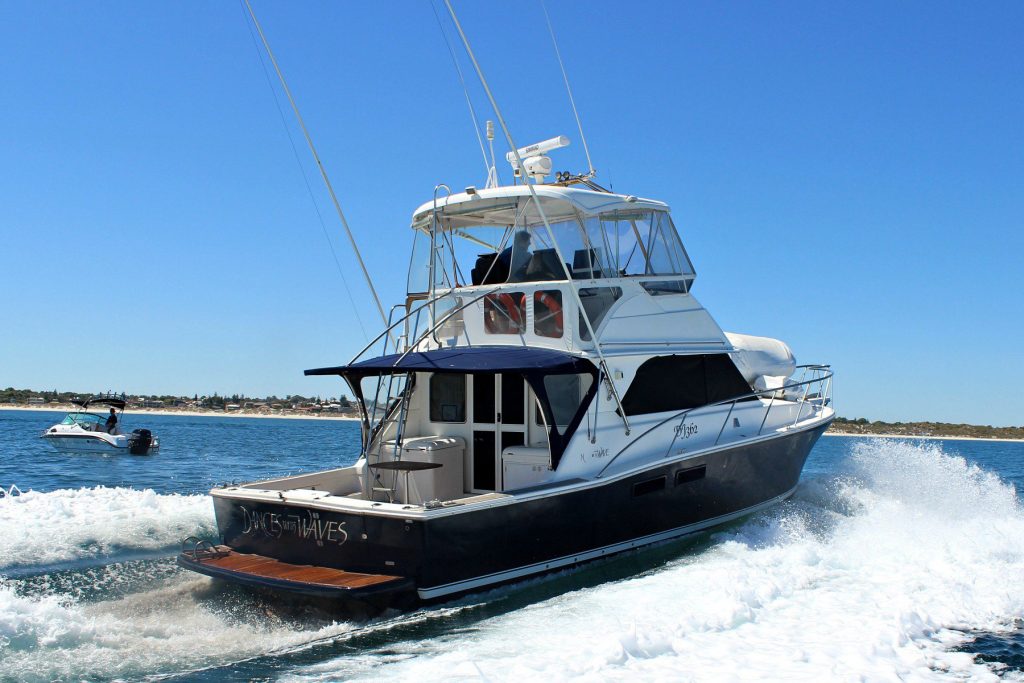
HOW IT WORKS
Radar operates in a similar fashion to sonar. It sends out pulses of energy and receives the echo of these pulses when they hit an object. The return signals are then processed into visual images. Short-duration pulses offer greater resolution, but they can’t travel far while longer pulses can travel farther, but result in lower resolution images. Rather than using the single pulses employed by conventional radar, the Halo uses pulse compression, which in affect is a burst of pulses similar CHIRP sonar. The essential component in the Halo radar is the 25-watt gallium nitride amplifier that enables it to produce the burst of pulses. Until recently, this technology was only used by the military. Simrad is the first to use it in recreational radar.
ON THE WATER
While the Halo Radar can be set manually, for the majority of users, the pre-set modes will provide them with exactly what they need and it was these features that we tested on the water. Sitting in the Hillarys Marina we turned on the harbour mode and combined it with a navigational overlay that provided us with a precise layout of the harbour. We could have got a similar result purely by using the GPS on the NSO unit already installed in the boat but the big difference was that the radar also provided information on boats, no matter how small moving inside the harbour. We even picked up two guys on kayaks. When you are in a harbour you don’t know, and lets face it not too many of us are going to have it operating in our home harbour, this could be very useful information that could save you from an embarrassing, and costly, accident.
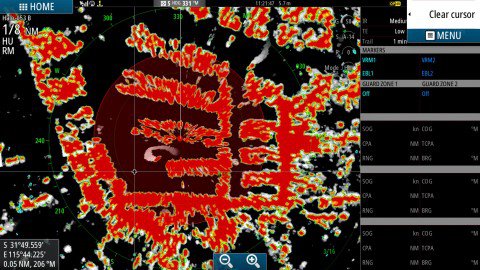
Once we left the marina we switched the radar to offshore mode and being a hot summer’s day there were plenty of boats in the vicinity. All of them showed up on the screen as red blobs but with a tale behind them, indicating they were on the move. Being able to track them, using the MARPA Target Tracking feature, meant we could see exactly how fast they were going and what direction, and more importantly, track if they were on a collision course with us. This function would be really handy when you were anchored. You could set it up so it not only warned you if other boats were dragging their anchor and getting too close to you but also if you were moving.
The feature I wanted to test most was the bird function. But of course on the day we went out the birds were either not hungry or there was no bait fish in the vicinity for them to feed on. The Halo 6 on the test boat has the capability of tracking birds up to 6 nautical miles (11kms) away, which will provide sports fishermen with a huge advantage.
OVERVIEW
It is hard not to be impressed by the Halo Radar. Whether you are a serious sports fisherman or just enjoy blue-water cruising this technology is going to make life a lot easier, and safer. Most serious ocean cruisers have both pulse and broadband radar fitted so they can monitor short and long distances. The Halo will enable you to do both using the one piece of equipment. While we did not get to try out the bird feature it is going to give sports fishermen a big edge to be able to “spot” birds feeding up to six kilometres away.